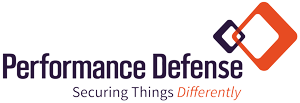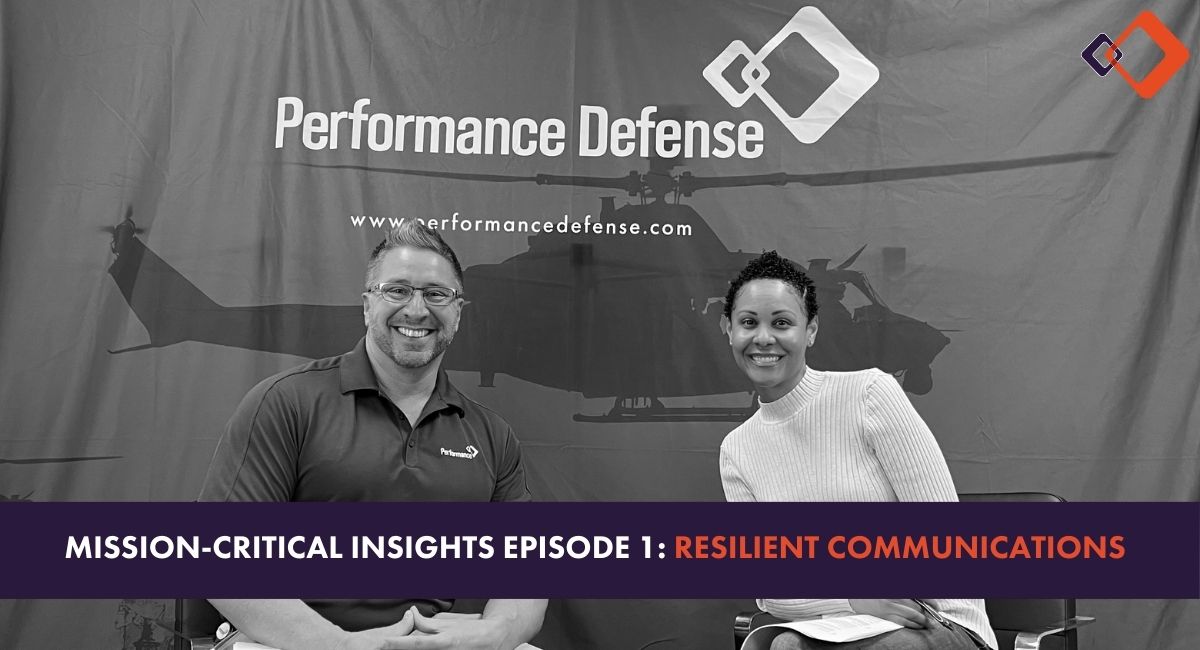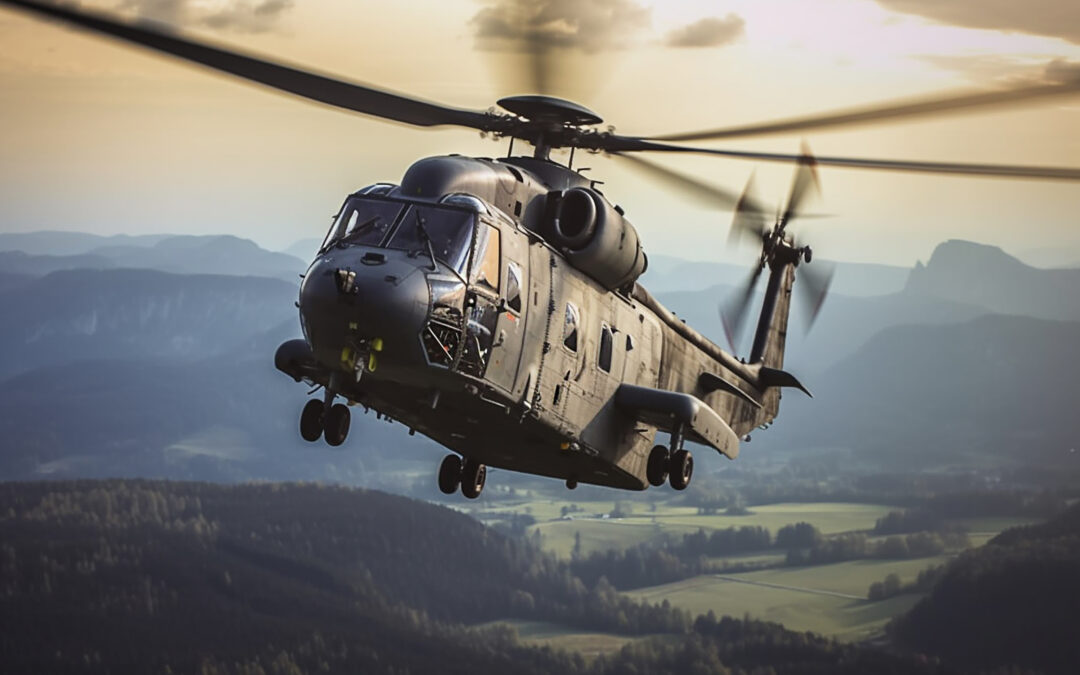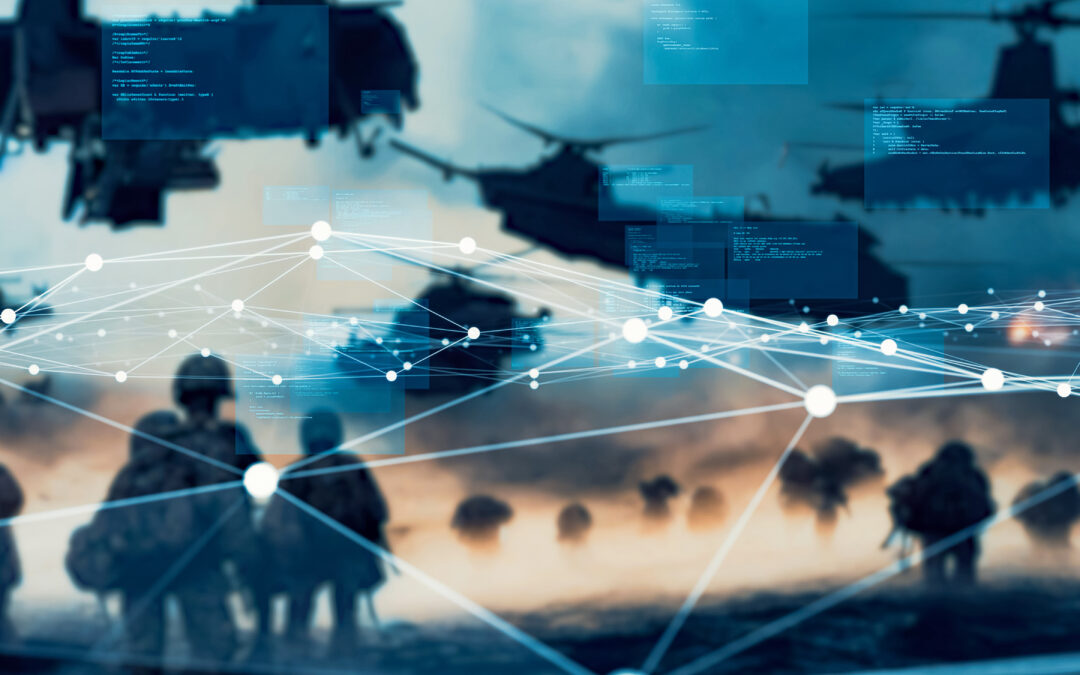The following interview dialogue is from episode one of Mission-Critical Insights between the President of Performance Defense, Darren Cummings, and our host, Kanika Henry.
KANIKA: Hello everyone. I am your host, Kanika Henry, and welcome to the Mission-Critical Insights webcast series, where we make it our mission to bring you the latest defense trends and provide relevant discussion with our trusted subject matter experts. On today’s episode, we are here with the President of Performance Defense Darren Cummings, and he’s our subject matter expert for today. Darren why don’t you just go ahead and introduce yourself.
DARREN: Well great, nice to meet you Kanika. Again, as Kanika mentioned, my name is Darren Cummings, I’m the president of Performance Defense. I’ve got about 25 years in network communication technologies both terrestrial and satellite-based communications, really big emphasis on dual-use technologies, network resilience, availability, those type of aspects that you’d want to see in an ideal network. Lately, the last three years, I’ve been working on a pretty cool cutting-edge device that its predecessor was used for commercial avionics, but is leveraging some of the high availability for the 5G networks in today’s environments.
KANIKA: That sounds very interesting and exciting, I would imagine that mission-critical solutions take years to develop, certify, and deploy. You mentioned resilient communications, what exactly is resilient communications and what does that term fully encompass?
DARREN: Well, we would need hours to fully answer that question Kanika, but I’ll give you a highlight. You know “resilience” by definition just means the ability to overcome a difficult situation. In terms of network you know, communication paths and things like that, difficult situations can arise in the real world just naturally. You know, rain has a huge attenuation effect on RF propagation, foliage you know, the ability to penetrate leaves and trees and natural obstacles–huge, huge obstacle. But then those are man-made. And then there’s unnatural such as anti-access or anti-denial-like specific targeted ways of ‘I want you to not communicate.’ So, you have unnatural things working against you especially in the DoD environment, where these are techniques that our adversary employs specifically to cause us not to be able to communicate, right? So, the mantra of the DoD, especially the Special Forces, is move, fire, communicate. And if you take away the ability to communicate, you take away essentially the ability to you know, collect targeting data and things like that.
So, some of the characteristics of you know, the ideal network if you will, or the resilient network, would include distribution. So distributed networks have a built-in aspect of redundancy. You are not relying on any one single point of failure, right? So you’re distributing that availability out to a broader network diversity and network paths, or multi-path they would call that in the term of art, where you know, you get cellular technology you know, 2G, 3G, 4G, 5G– both commercial and on non-commercial–so both public and private cellular networks. You’ve got satellite networks, both persistent as well as ad hoc, so you know, you see them in Ukraine war recently, is as an example dropping in StarLink terminals and instantly changing the game there. You have the ability to protect your network through hardening and network security. You know you hear things like zero-trust networks, and you know, hey this is an untrusted network but I need to instill a layer of trust on it so that would be like an example of a zero-trust network application. You have encryption; you hear these “Quantum-resistant” you know, encryption techniques and things like that these days you would have to have some layer of encryption on this so only the people that you intend these you know, bits and bytes to go to receive the bits and bytes that they’re intended to get then.
The question is how do you know if you are compromised, right? If you, you need some level of threat detection or advanced threat detection to ensure you even know if you’re under attack or have been compromised. So unfortunately, insider threat is a viable threat, you may have bad actors inside your network. So, you need to be able to protect against that as well finally, if all goes really bad, and you find yourself in a situation where you have a compromised network or a challenge network that you need to restore, you need to be able to recover quickly. So sorry for the long answer, but you know, those are some of the high-level you know, network characteristics that one would say define a resilient network and you know, especially in something like a DoD operation.
KANIKA: Sure, so resilient communication sounds imperative and pretty much like the cornerstone need of every military branch. Darren, if you don’t mind giving some more specific examples and getting into further detail about that?
Darren: Sure, I mean it’s a great question, a great point. It’s one thing to take sort of a textbook answer of you know, all these characteristics of an ideal resilient network, right? And then apply those especially in the DoD force, so especially for the audience here that may not be as familiar with you know, military environment, we all relate resilient comes I think at least by the description we had earlier. We could relate that to our home environment and relate very easily right up on the stream you know; we got kids and TVs streaming multiple things so I need network and we need diversity and high speed communication paths. But how does that apply to the military? The first thing that comes to mind would be an MDTF, are you familiar with that term?
KANIKA: I am not.
DARREN: Okay, so an MDTF is a multi-domain task force–MDTF. There’s several you know that our U.S military has, they all have certain areas of operation, responsibility, things like that; but fundamentally an MDTF is a combined joint integrated force. So that force is responsible for multi-domains of action to include physical and virtual, so traditional land, sea, air– you know conventional courses, right? Army, Navy, Air Force, Marines. But the addition of two domains that are virtual, and that’s cyber and then space domain. Space being if you read the news these days, very highly with all the missile launches and you know, everybody doing their thing trying to dominate space. You got commercial environment–SpaceX–and everybody races into space and Bezos and all that very, very topical area these days.
But from an MDTF’s perspective, without resilient communications you fundamentally could cripple or lack the enablement of speed of mission you know, it relies on fundamentals like situational awareness, the decision-making speed you know, when things happen fast you’ve got to respond fast. So, any challenge to your network and without the you know, employment of a resilient network. You’re risking your speed of mission or the mission itself, the operation, whatever that operation may be.
So, the MDTF has a lot of responsibility and a lot of things to consider when they, when they go into an environment. For example, it’s likely not CONUS it’s you know Continental US, it’s likely not in the United States, it’s likely overseas, it’s in a hostile network environment you’re having to leverage indigenous comms, likely at local 3G, 4G, 5G networks and have to rely on those untrusted networks possibly, maybe it’s primary, maybe a secondary, maybe it’s a tertiary data path. But you still want to be able to employ this.
So, then we talk about security earlier, right? How do I make sure that only the people I want to see my data, see my data, even if I am on a hostile network. Then you have to consider things like data complexity. Well, if I’m sending volumes, and volumes, and volumes of data but I got only skinny pipes you know, to send this much data you know, something’s got to give, right? So that’s where you know, you hear the terms of art these days “AI/ML” AI means?
KANIKA: Artificial intelligence!
DARREN: Yeah, everybody knows about it now right because you know, Tesla. Thank you, Elon Musk, and everyone else, everybody knows AI and Elon Musk didn’t invent AI but, he certainly made it very popular these days, right? Self-driving cars and all that. But you can take these types of commercial technologies and enable warfighting into lethality associated with that, war fighting unit effectively by making decision making at the edge as much as possible, avoiding those long, arduous, often challenged data paths. You know sending raw data back to some endless cell and over you know, and then trying to send decision back. I mean you’re losing time and time is of the essence you know, move, fire, communicate, right? You’ve got to move at the speed of mission so the more you employ things like AI/ML to edge network diversity, the ability to leverage anything to communicate, this maybe it’s a starling terminal well not the Elon Musk again and some AI amount to Edge and make decisions as closest to the edge of action as possible. You are leveraging all the best characteristics of a resilient network towards a real-time mission of an MDTF.
KANIKA: So, I would imagine with that level of advanced technology, there would have to be some challenges or gaps even associated with current comms solutions. Darren in your opinion, what would you say would be some gaps or challenges associated with current comms solutions today?
DARREN: Right, great, great question. Man, I’ve been in this game for over 25 years, and I could say you know, it’s ever-evolving cat and mouse, right? As soon as you innovate one thing, you know, somebody else figures out how to outwit it and then you know, it’s this ever-evolving game, right? So, I mean the biggest gap you know, honestly is human talent. Just training up our you know, our folks are you know, beginning in STEM you know, from young to through college and all that. Just having an adult workforce that cares about U.S national security and being able to innovate and leverage that innovation would be the first thing that comes to mind. So, the gap of workforce development at large is the first thing.
In terms of specific technologies, 5G is the first thing that comes to my mind. Leveraging 5G and the massive opportunity it brings, the massive commercial investment that comes with that, how do you leverage that though when you can’t necessarily trust it, right? If I remember the earlier part of our conversation, we talked about the ability to operate in an untrusted environment, you mentioned zero-trust networks and examples like that. How do we take that massive opportunity of 5G and gift wrap that to the WIOs, warfighters, where I spend a lot of my time candidly thinking about “how do we do that?” And some of the product sets that we’re creating here at Performance Defense.
The second thing that comes to the top of mind I guess just generally the agility and how fast we can transition new innovation into our fighters hands. Now that’s a big can of worms because you know, we probably have future conversations around broken acquisition cycles you know, some of the biggest frustrations I’ve had in my career personally, or having you know, a widget or a ‘gronkulator’ you know as we effectively call them you know, just a piece of technology or innovation that the Warfighter needs and wants but then how do you cross this huge bridge of making that happen? And that is that whole acquisition cycle and you know, we’ll probably have a technical session on that later and it’ll be a long one, but the third thing that comes top of mind is just the ability to operate at the network edge. We talked about AI and ML and our ability to push decision making closer and closer to where the data, the insights from that data, and the response to those insights needs to be. That to me is another area that I think has a lot of opportunity for innovation and growth. Those I guess–so you know, workforce development does that you know, training up a workforce that can innovate, that’s kind of an encompassing response but then specifically a 5G agility and operation at the edge would be the first things that I would think of.
KANIKA: Wow this is very interesting, so I was just looking at the United States defense budget last year and I was shocked! Do you want to take a guess at how much it was the defense budget for last year?
DARREN: Oh boy, if I had a guess which I’m sure I’ll be shocked as well which is why you’re teeing this up for me, put me on the spot, I’ll go half a trillion.
KANIKA: Actually it’s 740 billion.
DARREN: I was kind of close, I guess. I was yeah–
KANIKA: And then listening to our and listening to what our military has developed so far I mean, I can see why you know. So, I would also imagine too, there are dozens of commercial solutions that are out there. When a customer is in the market acquiring a communication solution, what would be the top three to five things you’d recommend that they would look for in a system or solution?
DARREN: So make sure I understand the question right, you’re asking if there’s a commercial dual-use technology, and there’s a military customer that wants to acquire that, like what are some of the recommendations I have for like what are some of the things that they need to consider?
KANIKA: Yes.
DARREN: Okay, so yeah this is a great question and I could tell you from a lot of battle wounds and hard knocks in creating a company meant to take technology to that space, wow, there’s a lot of things I had to learn through the school of hard knocks like I mentioned, and some lessons learned. The first that comes to mind are some of the compliance aspects of that what you think you built according to your standards are going to be much different than what the military compliance standards are. They have a whole MIL- standard you know, set of rules like “hey that you know, these things shall comply with this, that, and the other thing, right?” So, if you’re not aware of that, and you’re building a you know, a product or like I mentioned before a ‘gronkulator’, you like that term, right? Definitely the ‘gronkuator’ or the widget yeah, you better pay attention to some of those compatibility standards and make sure you’re not surprised what you’re going to you know, it’s going to upset both of you. You’re going to have to spend a lot more time and money to get up to those standards and of course the customer is going to have to wait.
The second thing that comes to mind are the security, we talk about security in in terms of the resilience, right? So, there are standards again related to security that you need to adhere to. One of the products we’re developing at Performance Defense is a 5G box. We built that to commercial standards, so one of the things we had to do is go back and map DO-170A, DO-254 and security standards which are under commercial avionics DO-326. We had to map those over to MIST standards and make sure that we could do the magic rubric right, of hey here’s how these standards actually meet or exceed, but that was a big exercise, and it took a lot of time and money and expertise to do that. So that would be another one for sure.
Companies, I would advise companies to pay attention to scalability, would be another one. You might have built this for certain scalability you know, an architecture to meet a certain scale in your commercial market that may be way different than the market that you’re looking at could be more or less, right? So, there are tweaks, maybe if your scalability mindset when you architect it is or millions of end users or devices or whatever, and its thousands here, there’s probably some advantages you know, you could save there. But for sure, it doesn’t bring up the fourth model and that’s pricing. If you built this for expecting millions of users and having a like, an app sort of mindset you know, “hey ten bucks per user and a million users” you know, that’s your revenue model, but your addressable market is only thousands here. You got to think about that licensing model with that engagement model, not to mention you know, your commercial models, like in-app purchases and things that are really vogue today in a commercial market. They’re not going to fly in a military market, not to mention you have sustainment and all these other things that you’re going to have to adhere to when selling to the government customer, right?
And that’s kind of a natural segway into I guess the last one that comes to mind is the cost effectiveness. You know they’re buying standards, there’s a whole branch of government dedicated to making sure the government’s getting fair and reasonable pricing, so you have to really look at your model, course model here, make sure that’s something that you can justify to your government customer. Just a handful of things that come to top of mind having some battle wounds myself from having to take in technology into that domain.
KANIKA: Yeah, I bet, yeah. Thank you so much for that, that was very insightful.
DARREN: Sure yeah, happy to do it.
KANIKA: We have covered a lot of ground in this episode, and as someone who you know, is not in this field, I learned a ton, and I’m quite positive the audience did too! I mean there was just–it’s amazing how much information you can unpack with just one topic of resilient comms. We’ve talked about, we’ve learned what resilient communications means in the DoD world, how it applies to MDTFs, the current technological challenges we face, and I mean last but definitely not least, and how to choose the right communication solutions. So it’s been a lot!
DARREN: Yes it is, yeah it has, thanks for bearing with me for some of that by the way.
KANIKA: No of course, you’ve been amazing, it has been really good. So, this all begs the question Darren, what you got cooking? Some new breakthroughs, or any new innovation that you’re working on?
DARREN: Another softball, I appreciate that Kanika, uh no we’re, we are working presently on an EDGE 5G-X device, as in our name for the product, but fundamentally what that is, it’s a device that provides software definable Wan or SD-WAN capabilities, some AI/ML compute capability. We took some commercial technologies and moved those into a specific military use case domain and we’re you know, tackling AI/ML, Edge compute, SD-WAN those types of use cases collections, even at the edge leveraging a small form-factor, mission-critical, certifiable device, that’s what keeps me busy these days.
KANIKA: Yeah, no, for sure. This has been very great. This has been very insightful, very interesting, and just overall I’m just, I’m dumbfounded with how much work you guys are doing and how critical, how imperative it is. I do have one more question for you though, last question, if you don’t mind Darren, just telling the viewers and the listeners how they can be able to reach you?
DARREN: Sure! Yeah another easy one, thank you for that. So the easiest way to reach me is on LinkedIn, that’s really the best way that we’re able to communicate what we’re working on. It’s a great platform for sharing videos like this one, updates and news and announcements and things like that, product updates, all that kind of stuff. Check back frequently, we’ll it should be in the bottom of the page–either my personal LinkedIn or the company Performance Defense LinkedIn.
KANIKA: Awesome, thank you so much Darren for your time.
DARREN: Great, thanks for having me.
KANIKA: Yeah absolutely! Of course. Well, that wraps up our very first episode of Mission-Critical Insights webcast series, and thank you guys all for watching and we will see you again soon.
More About Mission-Critical Insights
Mission-Critical Insights is a webcast series where we update you on the latest defense trends and provide relevant discussion with trusted subject matter experts on a variety of defense topics. This webcast series is brought to you by Performance Defense, a trusted provider of engineering solutions and services for mission-critical industries, specializing in full-lifecycle hardware and software development.
To watch this episode and others in this series, please visit the Performance Defense YouTube channel.





